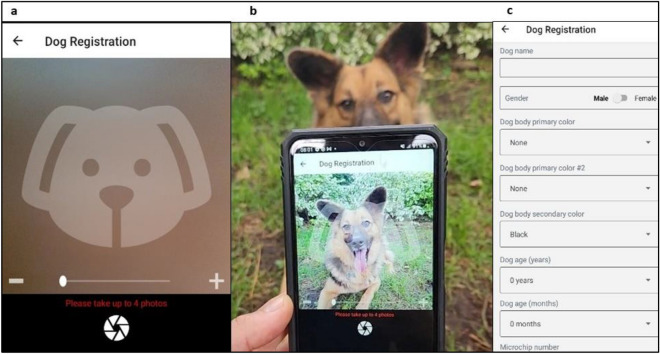
INNOVATION: Rabies control using facial recognition technology

Scientists have developed and successfully tested a mobile phone application featuring facial recognition technology designed to identify and differentiate vaccinated dogs from those unvaccinated.
The innovative technology, aimed to assess rabies vaccination coverage by tracking the number of vaccinated dogs, yielded promising results with its algorithm demonstrating a remarkable 99.2% sensitivity in correctly identifying vaccinated dogs.
According to scientists, with further development and operator training, the new technology has the potential to be a useful tool in disease control and population management.
Learn more about rabies here.
In their article published in the Scientific Reports journal, the scientists wrote, “Although the algorithm was accurately able to identify dogs, implementation required training, fine-tuning of the search engine, quality pictures and willing dogs.”
“In its current form, we have shown that the technology can support research purposes requiring identification of individual animals, however, we recommend additional technical improvements and training guidance to increase its potential for programmatic use.”
Ifakara scientists in the study
Led by Anna Maria Czupryna from the University of Glasgow in the UK with affiliation to Ifakara Health Institute, the study included contributions from Ifakara scientists Ahmed Lugelo, Maganga Sambo, Joel Changalucha and Kennedy Lushasi.
Other contributes are Mike Estepho and Philip Rooyakkers from PiP My Pet Technologies in Canada, Machunde Bigambo from Global Animal Health Tanzania, Katie Hampson from the University of Glasgow and Felix Lankester from the Washington State University in the USA.
Field-testing in rural Tanzania
The facial recognition technology was field-tested during a study conducted in rural Tanzania in nine agro-pastoral villages within the Serengeti district in late 2020. Dogs were vaccinated, registered using the application, and microchipped.
The objective was to create a robust system that not only ensures accurate identification of dogs but also streamlines the validation of their vaccination status.
Subsequent household visits were then made to validate the vaccination status of dogs, with operators utilizing the application to classify them as either vaccinated or unvaccinated. The classifications were then validated using microchips.
The app's accuracy
From the 534 classified dogs (251 vaccinated, 283 unvaccinated), the facial recognition application demonstrated an impressive specificity of 98.9% and sensitivity of 76.2%.
The positive predictive value was 98.4%, while the negative predictive value was 82.8%. The facial recognition algorithm demonstrated an impressive accuracy rate, correctly matching 249 (99.2%) vaccinated and microchipped dogs while only failing to match two (0.8%) vaccinated dogs.
Challenges in implementation
While the technology was a success, the scientists pointed out some challenges stating, “While our study demonstrated that facial recognition technology could be applied to domestic dogs in Tanzania, we identified several limitations that require consideration prior to wide-scale use.”
The limitations were associated with the unique conditions of rural Tanzania. They include free-roaming dogs not familiar with human handling, difficulty in capturing accurate images of dogs that could not sit still, and the time-consuming nature of photographing dogs, causing anxiety in the animals.
Moreover, additional challenges included factors such as sunlight exposure and lack of shade leading to distorted colors and facial features in many images. Human error and subjectivity in describing the sex and color of dogs also contributed to mismatches in the data set.
According to scientists, the challenges faced were influenced by the operators' limited digital literacy and familiarity with smartphones, suggesting the need for continuous training to ensure optimal use of the technology by both operators and dog owners.
Considerations for future use
Despite these challenges, scientists are optimistic about the potential of the facial recognition technology to identify dogs. They acknowledge that with refinement, the technology holds great promise for identifying free-roaming dogs in rural Africa including providing valuable support for research and intervention programs.
They further underline the need for technical improvements, such as better-quality camera lenses and faster shutter speeds, as well as training for operators to enhance the technology's effectiveness.
“With development and operator training, this technology has the potential to be a useful tool…. In our case, we field tested this technology for use in rabies control interventions specifically to estimate vaccination coverage but there are other animal disease and population management purposes for which this technology could prove useful.”
Read the full publication here.
